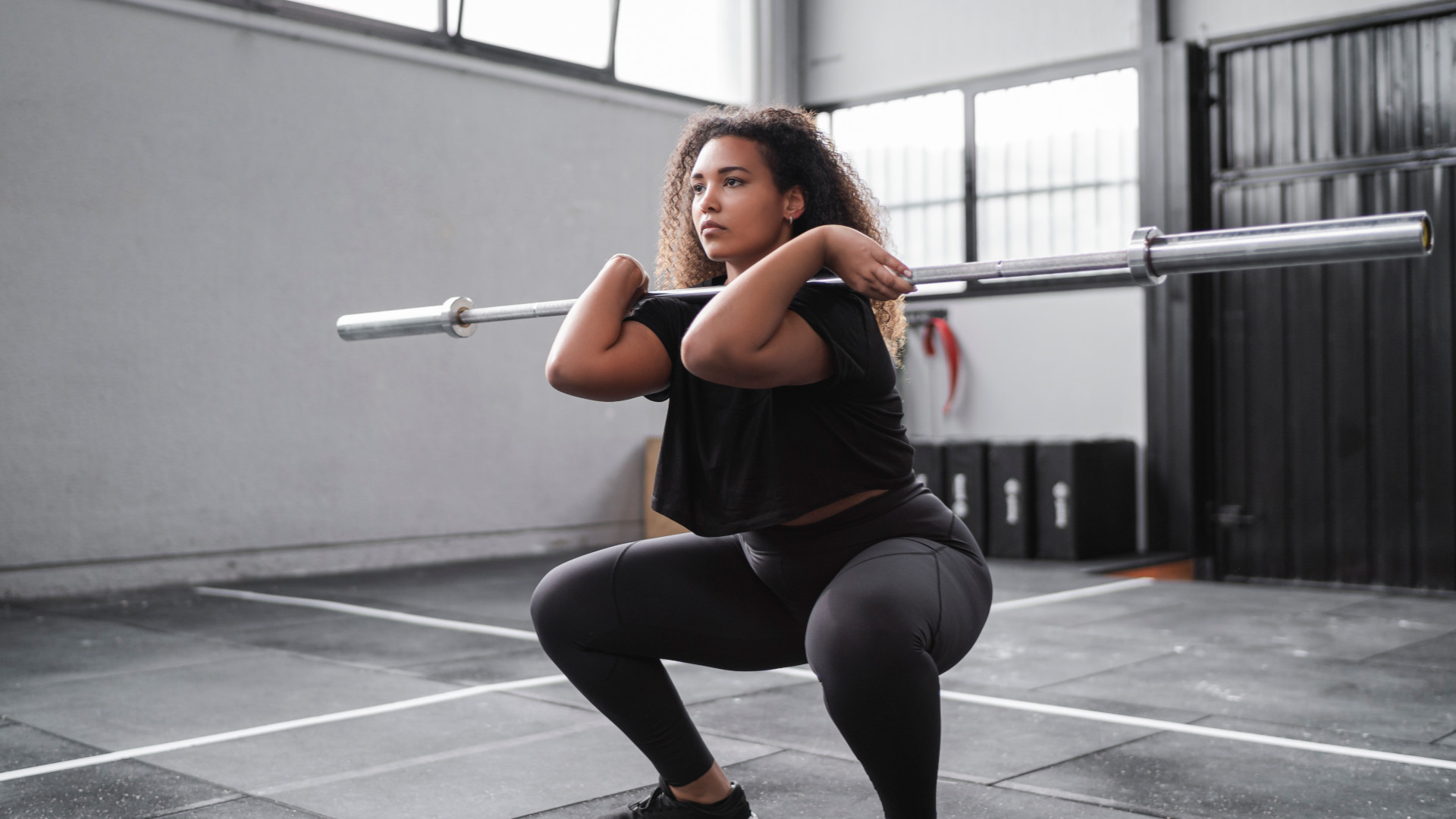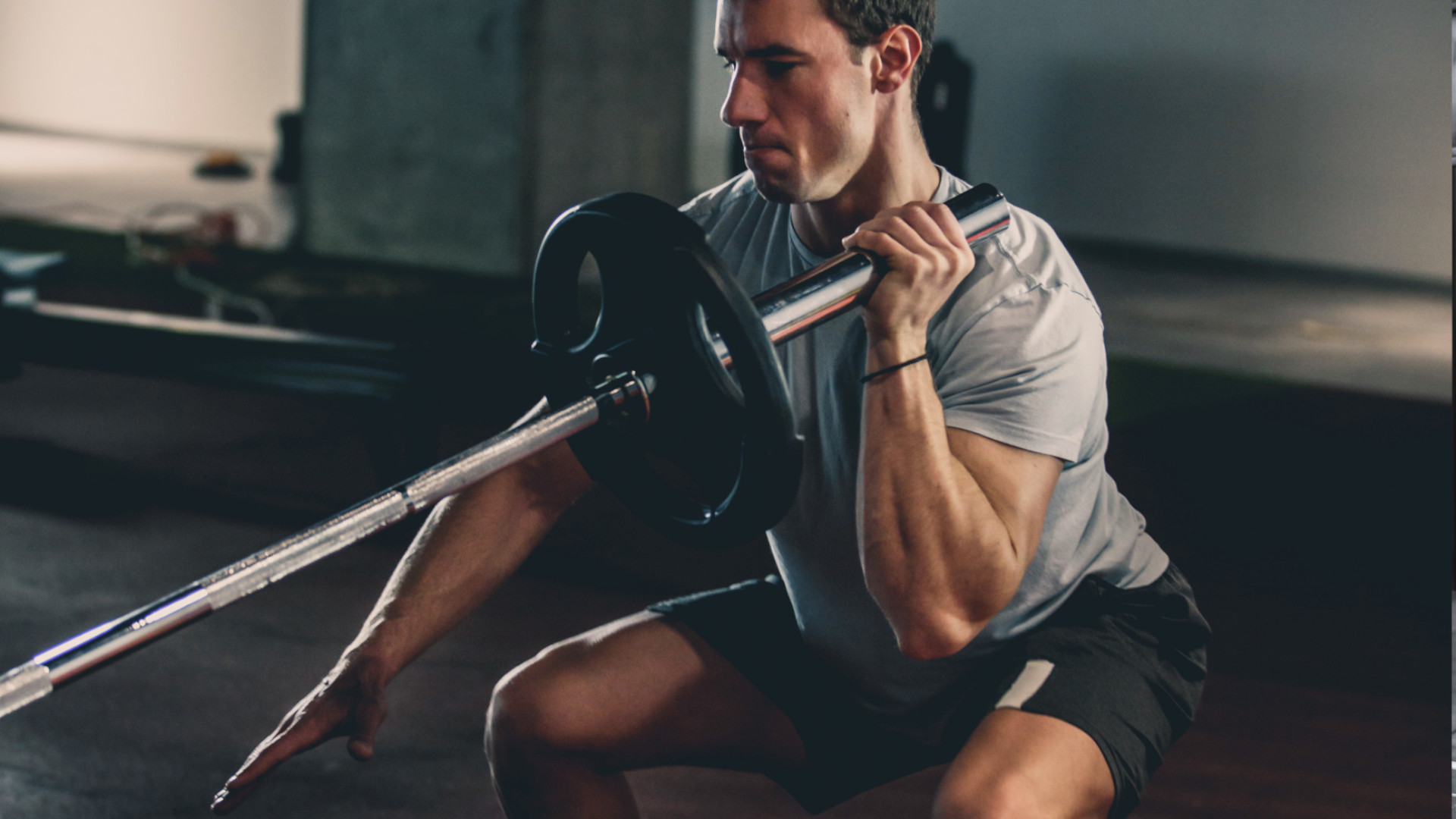

Back squats may be crowned as the king of lower body days, so that must make the front squat second in the line to the throne.
If you’re looking to beef up your pins, then you can’t go wrong with the front squat. Placing the load on the front of the body, this compound exercise can build impressive quads, as well as hitting your glutes, hamstrings, calves and upper back muscles.
They’re not the easiest exercise to master though, or the most comfortable. Just trying to position your arms and wrists correctly under the bar can feel like a workout in itself. Not to mention the anterior load forces your body into a more upright position giving your core strength a serious run for its money (so don’t be disheartened if you’re not lifting half the weight of your back squat).
If you’re not quite ready to take on the barbell version of the front squat just yet, there are plenty of other variations out there that still give you plenty of bang for your buck. Here’s three of our favourites…
Goblet squat

The goblet squat is a relatively low-skill exercise (making it ideal for beginners) and is a great way to nail your front squat form without having to balance a barbell across the front of your shoulders. Holding either a single dumbbell or kettlebell in front of your chest helps you master staying in that all-important upright position. Although don’t mistake ‘low-skill’ for low results, goblet squats are an excellent exercise that can build solid strength and muscle.
How to do:
- Pick up your kettlebell or dumbbell and hold it in front of your chest with your feet a little wider than shoulder width and your toes turned out slightly
- Take a breath in to brace your core, then sit your hips backward and squat down, making sure your knees travel in line with your toes
- Make sure your chest remains high and proud throughout and only go as low as you can whilst keeping your back straight
- In the bottom position, pause for a moment, before driving through the heels to stand back up tall
Landmine squat

The landmine squat does require a barbell but it isn’t as dangerous as its name implies. Instead of resting a bar across your chest, one end is secured in a landmine attachment on the floor, you then load up weight on the other end, hold it to your chest and squat down. In comparison to its barbell and goblet cousins, the landmine squat is incredibly comfortable, easy on the joints and having a point of contact with the floor makes it a much more stable movement. Plus, you can load up the weight safely to still make some serious gains.
Get all the latest news, reviews, deals and buying guides on gorgeous tech, home and active products from the T3 experts
How to do:
- Set up your barbell in a landmine base and load up your weight onto the other end of the barbell
- Squat down, clasp the end of the barbell and lift it up, holding it at chest height/just below your chin
- Position your feet into a squat stance, with feet a little wider than shoulder-width apart and toes turned out slightly
- Take a breath in to brace your core then, keeping the bar at chest height, sit your hips backward to squat down till your thighs are parallel to the floor
- Pause at the bottom then drive through your feet and squeeze your glutes to explosively push back up into the starting position
Zercher squat
Named after St.Louis Strongman, Ed Zercher, the Zercher squat doesn’t just hit the same main muscles as the front squat, but your biceps also get a pump. This is because the barbell rests in the crooks of your elbows between the bicep and forearm and if you aren’t squeezing them, well, say goodbye to the bar. With that in mind, again, it’s not the most comfortable lift, but for those who don’t have the wrist or shoulder mobility for the front squat, it can be golden.
How to do:
- Set up your barbell in a squat rack with your desired weight (aim for a height between chest and waist)
- Take your arms underneath the barbell so that it’s resting between your bicep and forearm, and keep them tight with your hands either clasped or fists clenched towards the ceiling
- Take a breath to brace your core, unrack the bar and take a couple of steps backwards
- Standing tall with your feet a little wider than shoulder-width apart and your toes slightly pointed
- Whilst constantly squeezing your biceps and keeping your fists high, take another breath to brace then squat down until your thighs are parallel or just below
- Pause briefly at the bottom, before driving back up through the heels to the starting position
Tip: If you find resting the barbell between your elbows too uncomfortable, pop a bar pad around the bar for some extra cushioning, or wrap an exercise mat around it

Bryony’s T3’s official ‘gym-bunny’ and Active Staff Writer, covering all things fitness. She is a certified personal trainer and also a part-time fitness instructor. In her spare time, you will find her in her natural habitat - the gym - where her style of training is a hybrid of bodybuilding and powerlifting. Bryony loves writing about accessible workouts, nutrition and testing innovative fitness products that help you reach your fitness goals and take your training to the next level.
